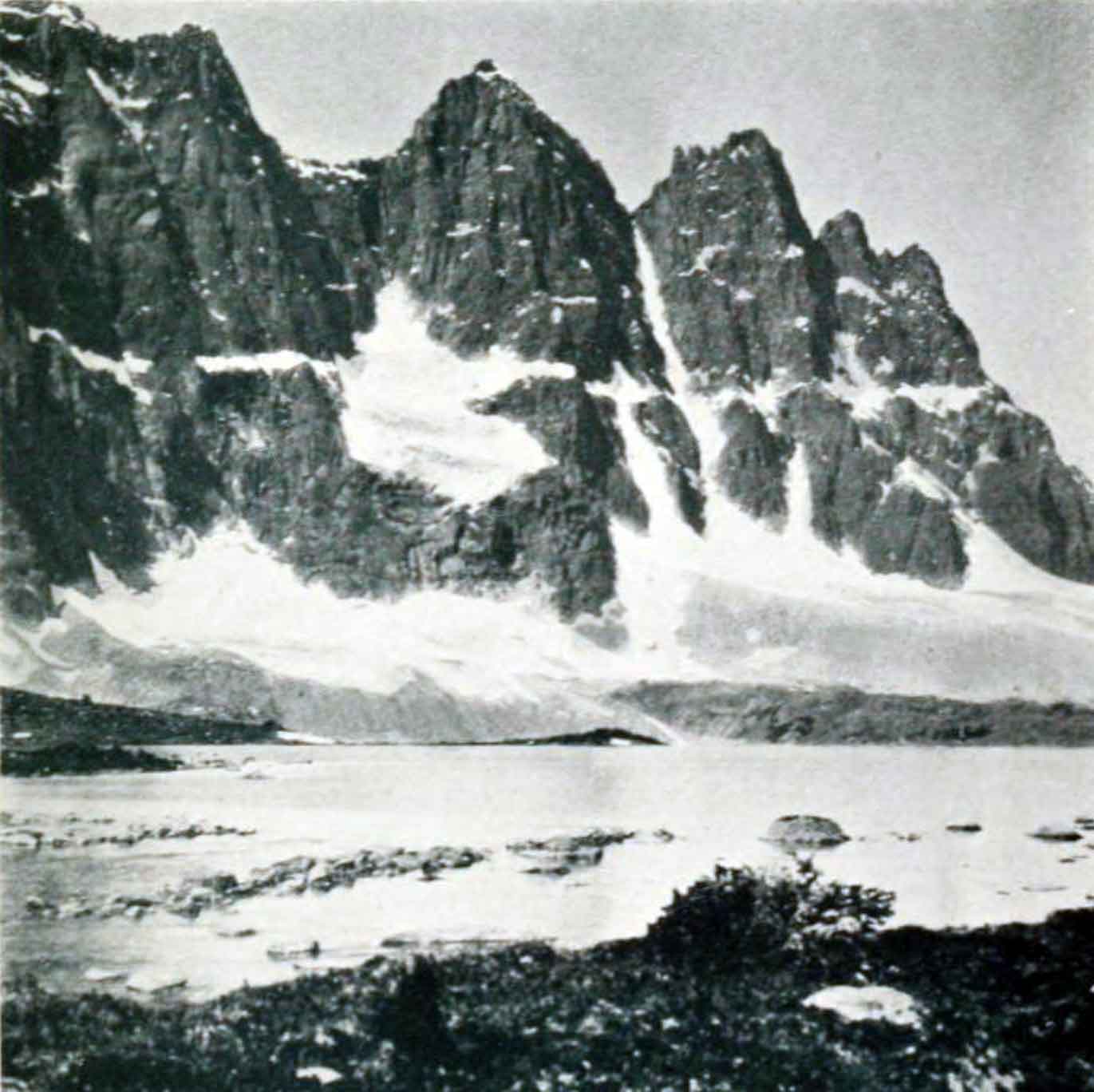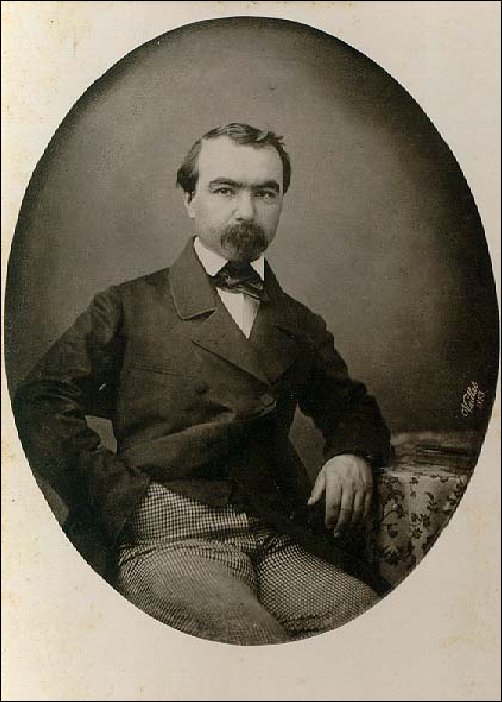Author Archives: Swany
The Twins
85 km SE of Jasper
52.2236 N 117.4344 W — Map 083C03 — Google — GeoHack
Name officially adopted in 1980
Official in Canada
Named by Hugh Edward Millington Stutfield [1858–1929] and John Norman Collie [1859–1942] in 1898. It comprises the North Twin and South Twin peaks.
- Canadian Board on Geographical Names. Place-names of Alberta. Published for the Geographic Board by the Department of the Interior. Ottawa: Department of the Interior, 1928. Hathi Trust
- Karamitsanis, Aphrodite [1961–]. Place names of Alberta. Volume 1: Mountains, Mountain Parks and Foothills. Calgary: University of Calgary Press, 1991
The Ramparts
E of headwaters of Fraser River
52.7167 N 118.3833 W — Map 83D/9 — Google — GeoHack
Earliest known reference to this name is 1921
Name officially adopted in 1928
Official in BC – Canada
Boundary Commission Sheet 28 (surveyed in 1921)

The Ramparts from Amethyst Lakes. Thorington 1924
Internet Archive
James Monroe Thorington [1895–1989] visited the area in 1923, and his book The Glittering Mountains of Canada includes a chapter on The Ramparts.
The peaks of the Ramparts are Geikie, Turret, Bastion, Drawbridge, Redoubt , Dungeon, and Paragon. Max M. Strumia named the peak between Dungeon and Paragon “Mount Oubliette,” not an official name.
After an expedition in the area in 1933 that included several first ascents, mountaineer Cyril G. Wates [1883–1946] wrote, “I know of no compact and continuous range in the Canadian Rockies which can show such an array of difficult peaks.” Wates called the pass between Paragon and Parapet Peaks “Para Pass,” also an unofficial name.
- Cautley, Richard William [1873–1953], and Wheeler, Arthur Oliver [1860–1945]. Report of the Commission appointed to delimit the boundary between the Provinces of Alberta and British Columbia. Part II. 1917 to 1921. From Kicking Horse Pass to Yellowhead Pass.. Ottawa: Office of the Surveyor General, 1924. Whyte Museum
- Thorington, James Monroe [1895–1989]. The Glittering Mountains of Canada. A record of exploration and pioneering ascents in the Canadian Rockies 1914-1924. Philadelphia: John W. Lea, 1925. Internet Archive
- Strumia, Max M. “The first ascent of Mt. Oubliette.” Canadian Alpine Journal, Vol. 21 (1932):74
- Wates, Cyril G. [1883–1946]. “The Eremite and beyond.” Canadian Alpine Journal, Vol. 22 (1933):64-70
- British Columbia Geographical Names. Ramparts, The
The Helmet
NE of Mount Robson SE of Berg Lake
53.115 N 119.1417 W — Map 083E03 — Google — GeoHack — Bivouac
Earliest known reference to this name is 1908 (Kinney)
Name officially adopted in 1951
Official in BC – Topo map from Canadian Geographical Names
Coleman’s map of Mount Robson 1910 [as “Helmet”]
Collie’s map Yellowhead Pass 1912
Wheeler’s map Mount Robson 1912
Boundary Commission Sheet 32 (surveyed in 1922 and 1924)
![East face of Mount Robson and The Helmet (background right). Photo: Byron Harmon [1918]](/wp-content/uploads/2024/03/wmcr-harmonb-v263-na-0955.jpg)
East face of Mount Robson and The Helmet (background right). Photo: Byron Harmon [1918] Whyte Museum of the Canadian Rockies
Kinney had accompanied Arthur Philemon Coleman [1852–1939] and Coleman’s brother Lucius on the first mountaineering expedition to Mount Robson in 1907, when they approached from the Fraser River side and got little further than Kinney Lake. They returned in 1908, guided by Adolphus Moberly [1887– ?] and John Yates [1880– ?], who took them up the Moose River valley and approached Robson from the north. They became the first people to report on Berg Lake, Tumbling Glacier, Robson Glacier, Rearguard Mountain, The Helmet, and Extinguisher Tower, features Kinney named after their appearances.
During the 1911 Alpine Club of Canada–Smithsonian Robson Expedition, director Arthur Oliver Wheeler [1860–1945] said he “looked at the north-east face of the Mount Robson massif. On the north shoulder rests a mighty ice-field, crevassed and broken in every direction. From its centre a rugged ridge protrudes, of which the culminating apex has been named by Coleman ‘The Helmet,’ from the resemblance to the old Roman headpiece when seen from the valley below.” [2] In his writings Coleman mentions The Helmet but does not claim to have named it. [3] [4]
- 1. Kinney, George Rex Boyer [1872–1961]. London, England: Royal Geographical Society Archives. Letter to Arthur Hinks (1917).
- 2. Wheeler, Arthur Oliver [1860–1945]. “The Mountains of the Yellowhead Pass.” Alpine Journal, Vol. 26, No.198 (1912):382
- 3. Coleman, Arthur Philemon [1852–1939]. “Geology and glacial features of Mt. Robson.” Canadian Alpine Journal, Vol. 2, No. 2 (1910):73-78. Alpine Club of Canada [accessed 2 April 2025]
- 4. Coleman, Arthur Philemon [1852–1939]. The Canadian Rockies: New and Old Trails. London: T. Fisher Unwin, 1911. Internet Archive [accessed 3 March 2025]
The Dome
SE of Mount Robson, NE of Kinney Lake
53.0978 N 119.1389 W — Map 083E03 — Google — GeoHack
Earliest known reference to this name is 1911
Official in BC – Topo map from Canadian Geographical Names
Arthur Philemon Coleman [1852–1939] explored around Mount Robson in 1907 and 1908. Writing in The Canadian Rockies: New and Old Trails of his 1908 trip:
By walking a hundred yards from our camp into the valley Mount Robson came into view during the rare intervals when the clouds drifted away, disclosing an imposing dome of white rising eight thousand feet above our valley, the lower part banded with courses of rock. Immediately behind our little grove a half-mile of glacier flowed, separating us from the cliffs of the Rearguard, one of the subordinate peaks, which reached a height of about nine thousand feet. [p. 314]
Robson itself, seen from the new angle, had completely changed in shape. Instead of a some-what irregular, flat-sided dome, it was a daring pyramid in the sky, with filmy clouds sweeping across, casting blue shadows on the pure white of the snow. [p. 318]
Soon a fire was blazing, giving light to finish making the bed ; and not long after we were wrapped in our blankets, looking across toward the pallid face of Mount Robson, on which the moon was shining. About us everything was submerged in darkness by the shadow of the Lynx behind us, so that the moonlit hanging glaciers and the snow dome rose above the dark glacier at our feet like a lovely vision outlined against a nearly black sky sprinkled with stars. [p. 327]
The névé dome on the south-east buttress rose gently, giving a welcome chance to catch one’s breath, and soon we were on its summit, where a halt was made for a second lunch. We could look down over the gently curving surface toward the main glacier and our far-away camp ground among the last bushes at the foot of the Lynx, and we were higher than the Lynx itself and could see a great snowfield stretching beyond it to the east toward the valley of Moose River. [p. 337]
- Coleman, Arthur Philemon [1852–1939]. The Canadian Rockies: New and Old Trails. London: T. Fisher Unwin, 1911. Internet Archive [accessed 3 March 2025]
- Wheeler, Arthur Oliver Oliver [1860–1945]. “The Mountains of the Yellowhead Pass.” Alpine Journal, Vol. 26, No.198 (1912):382
The Comb
S of Moose Lake
52.8781 N 118.8825 W — Map 083D15 — Google — GeoHack
Name officially adopted in 1973
Official in BC – Canada
“The Rooster Comb” or “The Comb” refers to the shape of the peak ridge and its reddish colour.
— 1972 memo from BC Parks, with map, file C.1.62
- British Columbia Geographical Names. The Comb
The Colonel
NE of Moose Lake
53.0833 N 118.8 W — Map 83E/2 — Google — GeoHack
Earliest known reference to this name is 1911
Name officially adopted in 1923
Official in BC – Canada
Wheeler’s map Mount Robson 1912
Boundary Commission Sheet 30 (surveyed in 1924)
Boundary Commission Sheet 31 (surveyed in 1922)

Colonel Aimé Laussedat
Wikipédia
Colonel Aimé Laussedat (1819-1907) was a French scientist who, because of his contributions to the field of aerial photography, is called the “father of photogrammetry.”
Arthur Oliver Wheeler [1860–1945] named the peak in 1911, during the 1911 Alpine Club of Canada–Smithsonian Robson Expedition:
“Across the valley from our camp a fine-looking peak stood out conspicuously. On a small scale the peak resembles one on the Blaeberry River, near its junction with the Columbia, named Mt. Laussedat, after Colonel Aimé Laussedat, a French scientist who first brought to notice the uses of photography in mountain surveying. The station is here referred to as ‘The Colonel.’ It is a very commanding peak and the view from its summit will repay the climb, which is nowhere difficult. It was a wondrous sight—seas of peaks does not express it—oceans of peaks rising high in every direction. The immensity of the view is astonishing—the immeasurable chaos of it all!”
- Deaville, E. “Colonel A. Laussedat. In memoriam.” Canadian Alpine Journal, Vol. 1, No. 2 (1908):98
- Wheeler, Arthur Oliver [1860–1945]. “The Mountains of the Yellowhead Pass.” Alpine Journal, Vol. 26, No.198 (1912):382
- Wikipédia (Fr.). Aimé Laussedat
The Blackwater Tusk
N ofMcBride
53.3919 N 120.1 W — Map 093H08 — Google — GeoHack
Name officially adopted in 1994
Official in BC – Canada
The name “The Blackwater Tusk” was adopted in 1994 on Map 93H/8, as submitted by BC Forest Service in McBride. Some mountaineers have called this “The Needle.”
This spire is a notable landmark visible from the McBride Peak area, and an official name was required for communication purposes. “Blackwater” is the historic name for the nearby McKale River.
- British Columbia Geographical Names. The Blackwater Tusk
Tête Roche
N of Yellowhead Lake
52.9 N 118.5667 W — Map 083D15 — Google — GeoHack
Name officially adopted in 1924
Official in BC – Topo map from Canadian Geographical Names
Boundary Commission Sheet 29 (surveyed in 1917)
Boundary Commission Sheet 29 B (surveyed in 1917)
- Canadian Board on Geographical Names. Place-names of Alberta. Published for the Geographic Board by the Department of the Interior. Ottawa: Department of the Interior, 1928. Hathi Trust
Tête Jaune station
Canadian National Railway, junction of Fraser River and McLennan River
52.9783 N 119.5056 W — Map 083D13 — Google — GeoHack
Earliest known reference to this name is 1914 (GTP Timetable)
Name officially adopted in 1989
Official in BC – Canada
Mile 25 in Tete Jaune Subdivision (Red Pass to McBride as of 1977)
Grand Trunk Pacific Railway station built in 1912
Frederick Talbot’s map GTP 1910
Grand Trunk Pacific Railway map [ca. 1912]
Grand Trunk Pacific Railway timetable 1914
Grand Trunk Pacific Railway ticket 1914
Grand Trunk Pacific Railway map ca. 1918
Grand Trunk Pacific Railway map 1919
Pre-emptor’s map Tête Jaune 3H 1919
Grand Trunk Pacific Railway stations
Named for its location at Tête Jaune Cache.
The current Canadian National Railway marshalling yard at Tête Jaune is named “Harvey.”
Wrigley’s British Columbia Directory (1918):
TETE JAUNE CACHE a post office and station on the G. T. P. Ry., near head of Fraser River, 40 miles northwest of Yellowhead Pass, in Fort George Provincial Electoral District. Has G. T. P. telegraph office. Local resources: Farming, mica mining and timber.
Alexander R O mining
Chapin V W farming
Craig Stanley fishing
McDonald W farming
Porter M grain growing
- Wrigley Directories, Limited. Wrigley’s British Columbia Directory. Vancouver: 1918. Internet Archive